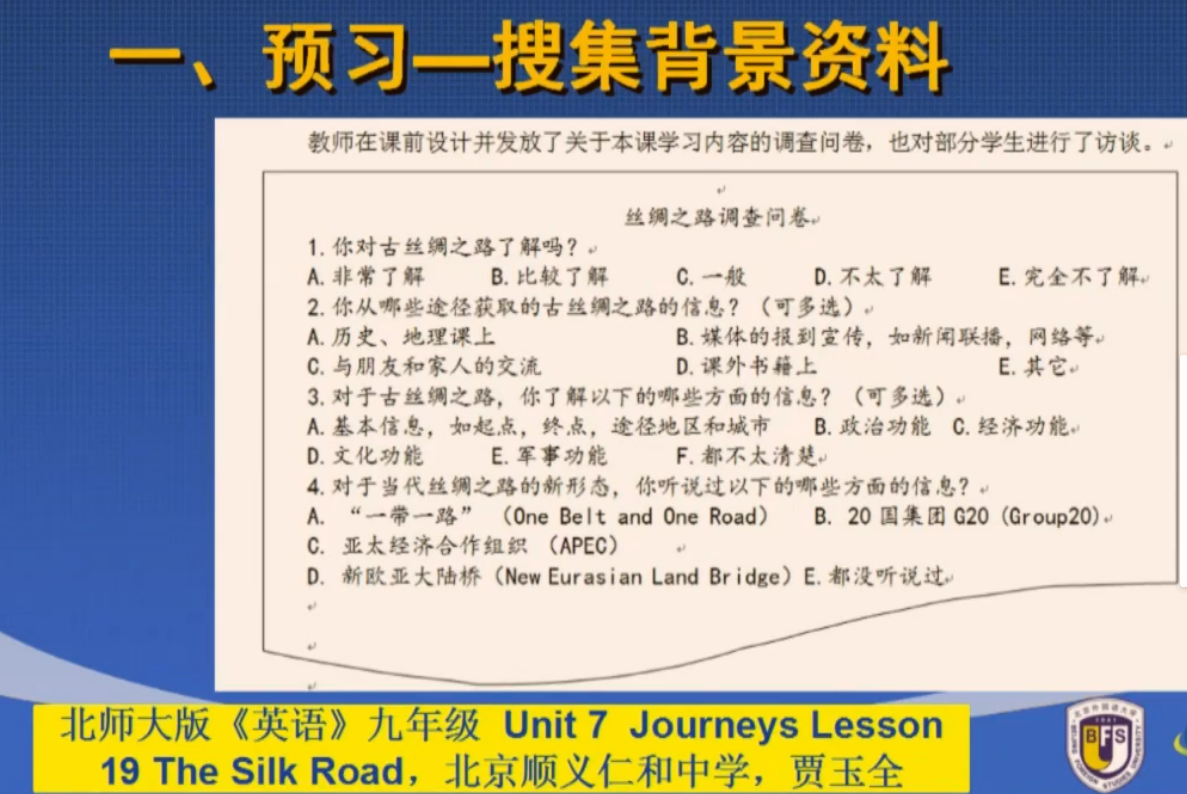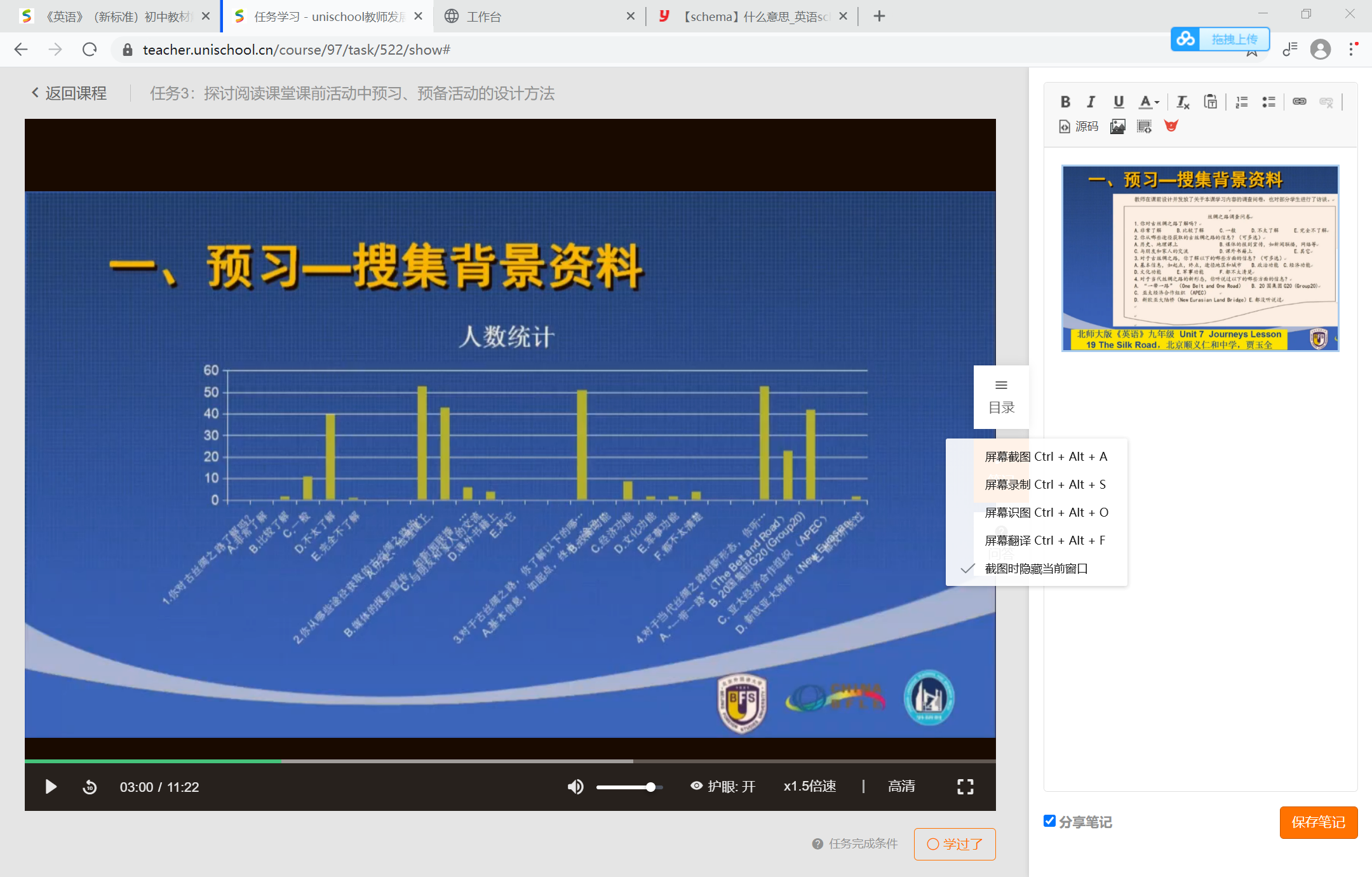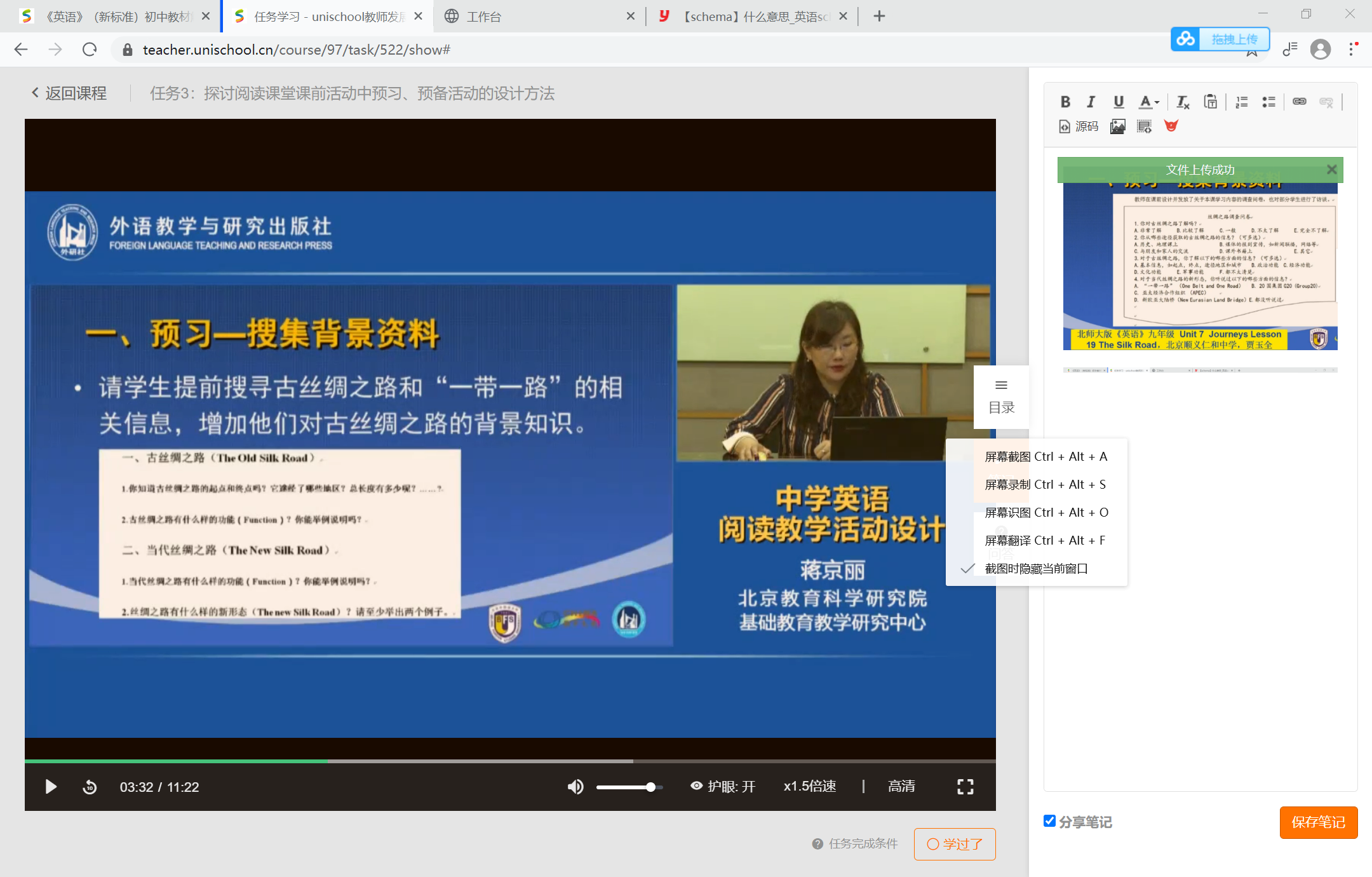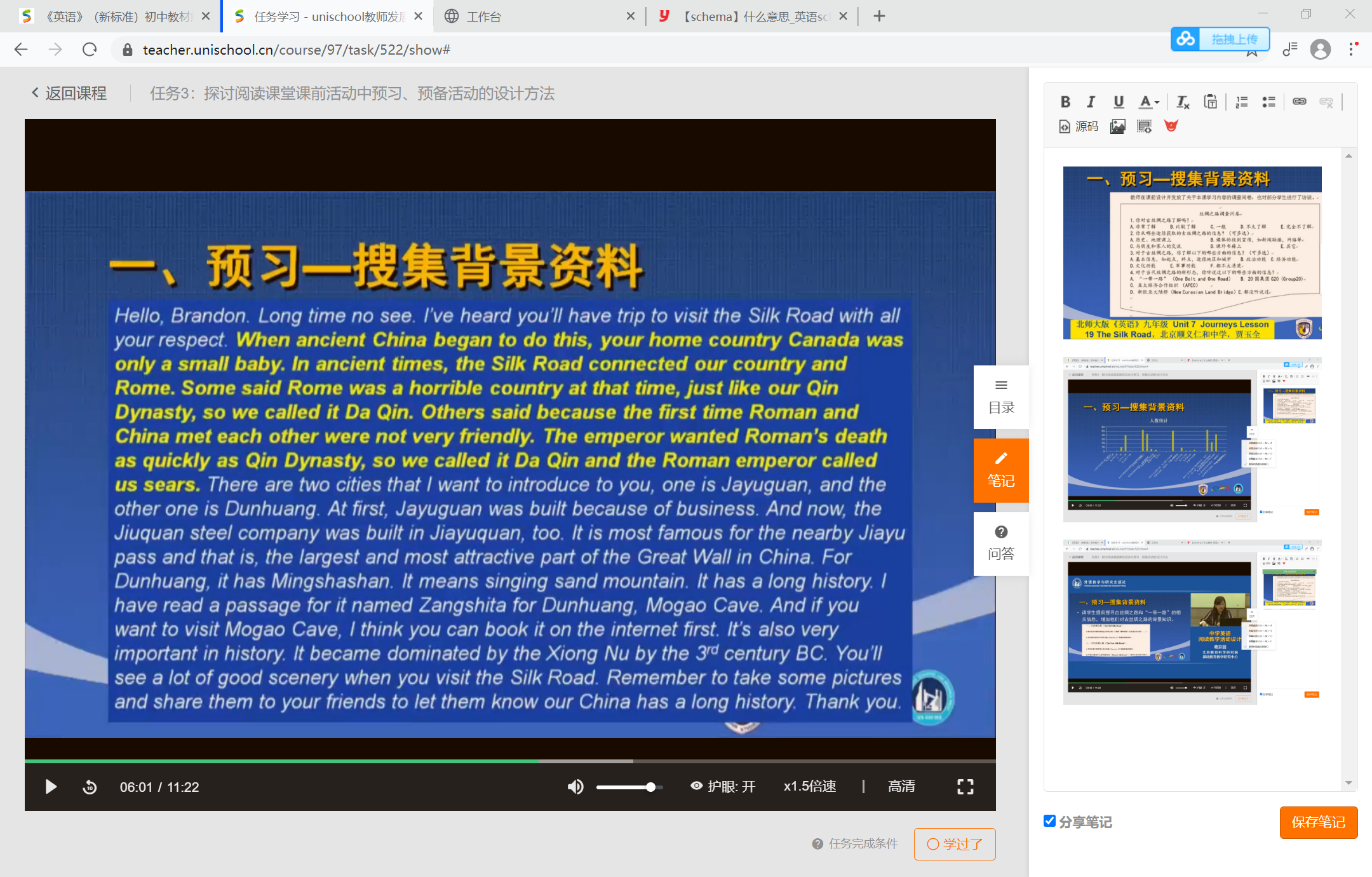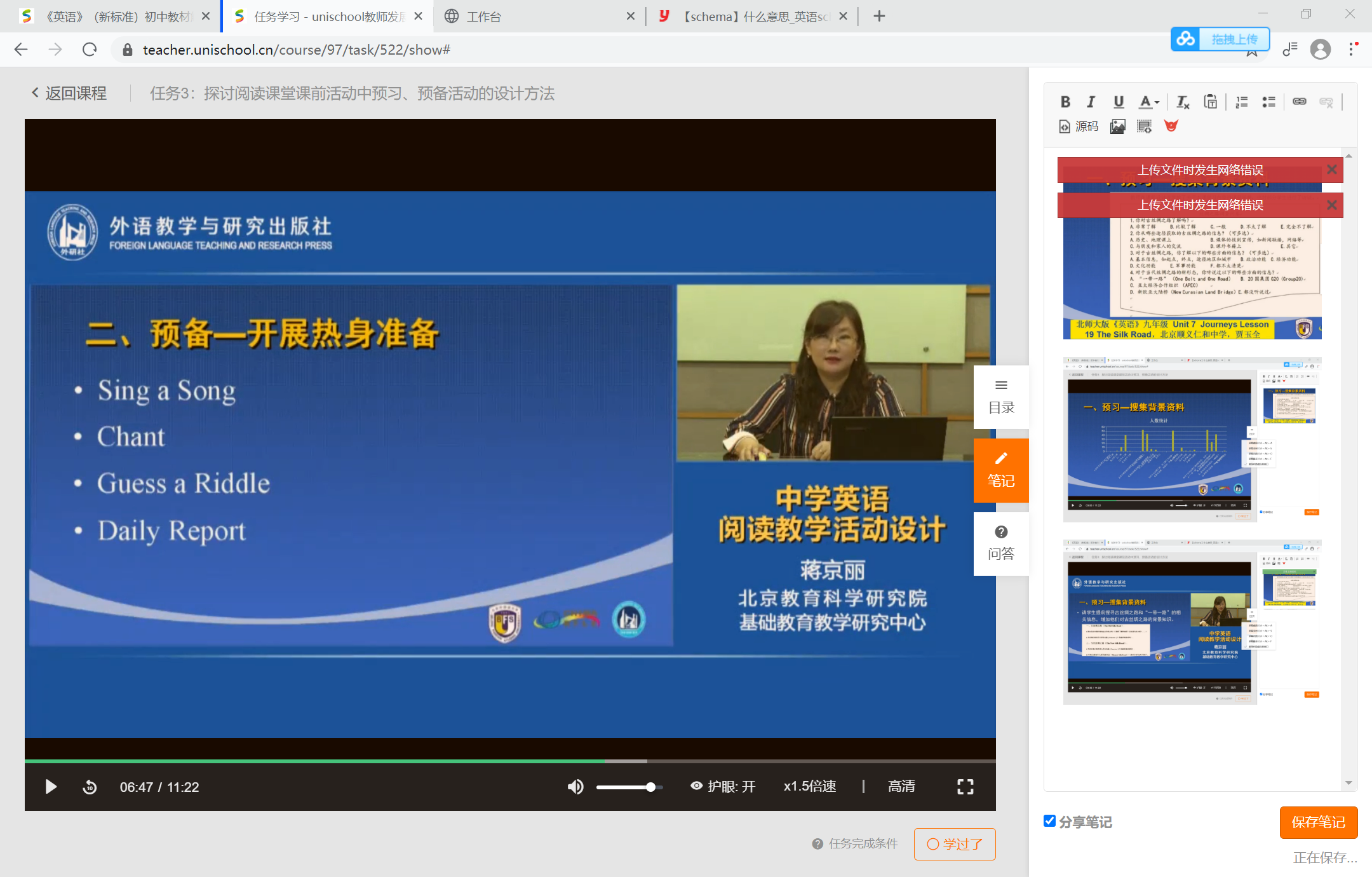三、读中-意义优先meaning first
以语篇为整体
读中-识别文体
读中-关注大意(skim for main idea/ read& match headings with paragraphs/jigsaw reading/Q&A认读显性事实,ask students to connect their answers to make a one-sentence summary of this passage.一句话总结旨在训练归纳技能,同时也是学生阅读活动的成果)
in most people's eyes,is. a dangerous game?why?
what's the writer's opinion? Is is dangerous, why?
what's the general information about the tounament?
三、读中-建构信息
基于文本信息形成网状认知(地图/思维导图)
如:对于文段中重要知识点(如时间节点)进行梳理,提取key words,关注语言,形成语篇结构。
表层化-结构化-关系判断
三、读中-关系判断
段与段关系、句与句关系,句与段关系
1.判断指代关系,代词,前指后指
2.判断因果关系 多追问why
summarize the factors that help the return of white bike.
3.区分事实与观点
议论文中,让学生找出那些事作者的观点,那些事作者的感受
have a clear mind while reading ads!
It‘s a fact that
It's an opinion that
4.把握时空顺序
把时间打乱,重新排列语段,或者让学生进行连线。
5.找出不合逻辑的句子
去除语义噪音
Can you find the sentence that doesn't belong to this passage?
6.句子还原填空
类似完形填空,可以设置多几个混淆项。
7.推理
心理图式
eg,character analysis
step 1 give an example of analyzing the heroine's friendliness detailed information in the text.
step 2 Ss works in pairs and find out more qualities of the heroine from the text.
step 3 Invite Ss to report their answers by providing and analyzing details from the text.
三、读中-辨识结构
篇章是具有内在逻辑相关性、完整性、完备性
引导学生通读全文,层次结构,行文线索,作者对笔下人物的态度与写作意图,要求学生先粗读课文,理解“总-部分-整体”的教学模式,词句的学习,观点的理解都在一个完整清晰的全篇认知图中进行,通过关键词、主题句有针对性地分析理解点,并以点带面,深化阅读。
(1)collection/description
(2)comparison(one view/opposing view)
(3)casusation(cause-result)
(4)problem-solution
可以作为图式交给学生,也可以在平时渗透教学。
三、读中-确定主旨
What‘s the main idea of the passage?
三、读中-猜测词义
underline the new words but keep on reading
After reading the whole passage, you may search for the meaning of the words by the dictionary or others. Don't forget to take the note
5 steps教学法:
1.找出生词new words ,判词性
2.找出生词所在的句子
3.找出生词所在的句子与其他句子或段落之间的关系
4.通过前三部,猜测词义
5.验证猜测
guessing words from context-principles
(1)look at the unknown word and decide what part of speech it is- noun,verb, adj
(2) look at the immediate context of the word, that is ,how does it relate to the words around it?
(3) Look at the form of the unknown word. Does it contain any familiar part? Does the meaning of these parts relate to your guess?
(4)look at word in the dictionary
(5)check whether your guess is correct.
5.1Is the part of speech of your guess the same as the part of speech of the unknown word?
5.2Replace the unknown word with your guess. Does it fit?
三、读中-查阅字典
判断是否需要查,查什么词典
四、读中-学生提问
激发学生积极性


